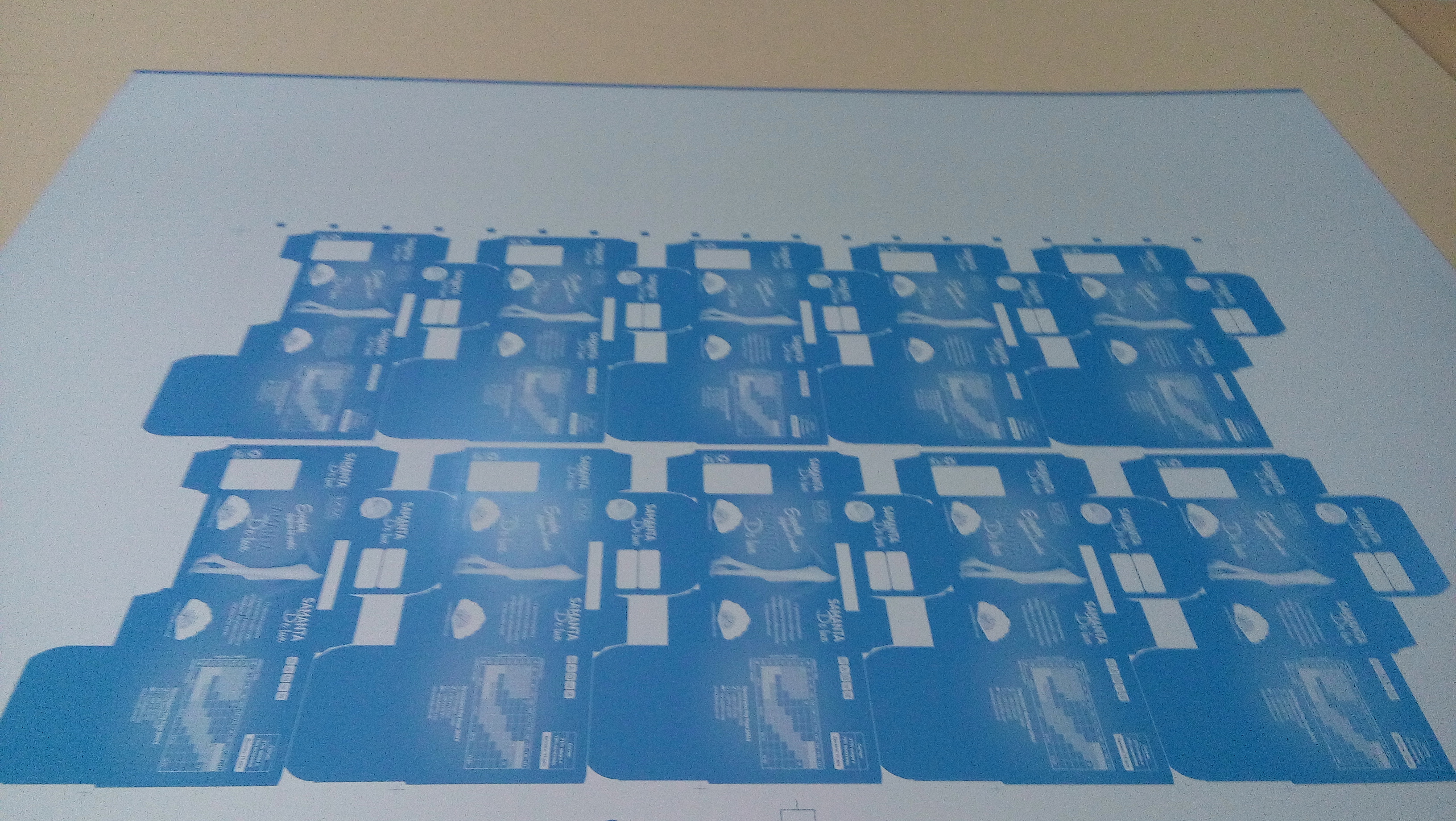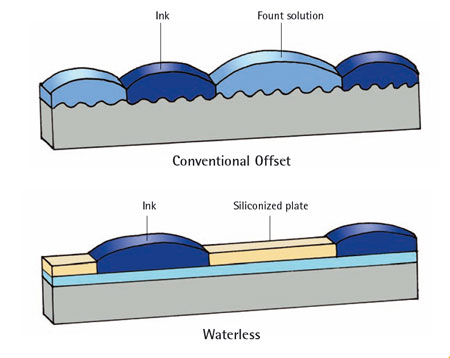Offset Printing Plates
Printing plates must have ability to transfer an image to paper, cardboard or other substrates. Printing plates are usually made from metal, plastic, rubber, paper, and other materials. The image is put on the printing plates with photochemical, photomechanical or laser engraving processes.
Usually, metal printing plates are more expensive but last longer and have greater accuracy.
The offset printing plates used in offset printing are thin (up to about 0.3 mm), and easy to mount on the plate cylinder, and they mostly have a mono-metal (aluminum) or, less often, multimetal, plastic or paper construction.
Aluminum has been gaining ground for a long time among the metal-based plates over zinc and steel. The necessary graining of the aluminum surface is done mechanically either by sand-blasting, ball graining, or by wet or dry brushing. Nowadays, practically all printing plates are grained in an electrolytic process (anodizing), that is, electrochemical graining with subsequent oxidation.
The imaging, ink-accepting coating (light-sensitive coating, thickness around 1μm) is applied to the base material. This material is usually a polymer, or copper in the case of multimetal plates (bi-metal plates). Light sensitive, diazo (photo-polymer) pre-coated aluminum printing plates are now the predominant plates in print shops. The image transfer is produced via the different properties on the surface of such plates after they have been exposed and developed. The remains of the original light-sensitive coating or the light-sensitive coating changed by the effect of light are the ink-accepting (oleophilic) elements that create the image.
Chemical changes occur as a result of the penetration of photo-effective (actinic) light (light containing UV rays), causing the light-sensitive coating to react differently depending on its type and structure. There are two types of photochemical reactions when developing the printing plate:
- hardening of the light-sensitive layer by light (negative plate-making),
- decomposition of the light-sensitive layer by light (positive plate-making).
With positive plate-making and conventional printing plates production, a positive film is used as the original, that is, the non-translucent, blackened sections of the film correspond to the ink-accepting surface elements on the plate.
In the case of negative plate-making with “negative plates” a negative film is used as an original, that is, the ink-accepting image areas of the printing plate correspond to the translucent, light areas on the film. For quality assurance and monitoring during plate-making, control elements are copied onto the plates.
Waterless Printing Plates
Waterless printing plate is a plate that uses an ink-resistant silicone coating to eliminate the need for dampening solution.A silicone layer covers the non image area and the silicone is removed from the image area to reveal the ink receptive photo polymer below.Ink avoids the silicone and collects in the slightly recessed image areas and then is transferred to the blanket and from the blanket to the paper.
This waterless plates allow the printed dot to be held more securely preventing any unwanted movement of ink and minimizing dot gain to create a sharper image in ultra fine resolution with better solid ink density and less color variations throughout the run. Greater ink density means better contrast and bolder colors.Registration is much better because we don’t have paper stretch that is caused from fountain solution. Eliminating dampening solution from printing process is also and environmentally-friendly printing process, since there’s no toxic fountain solution maintaining the ink/water balance,minimized VOCs and less paper waste since make-readies are quicker and more, accurate.

